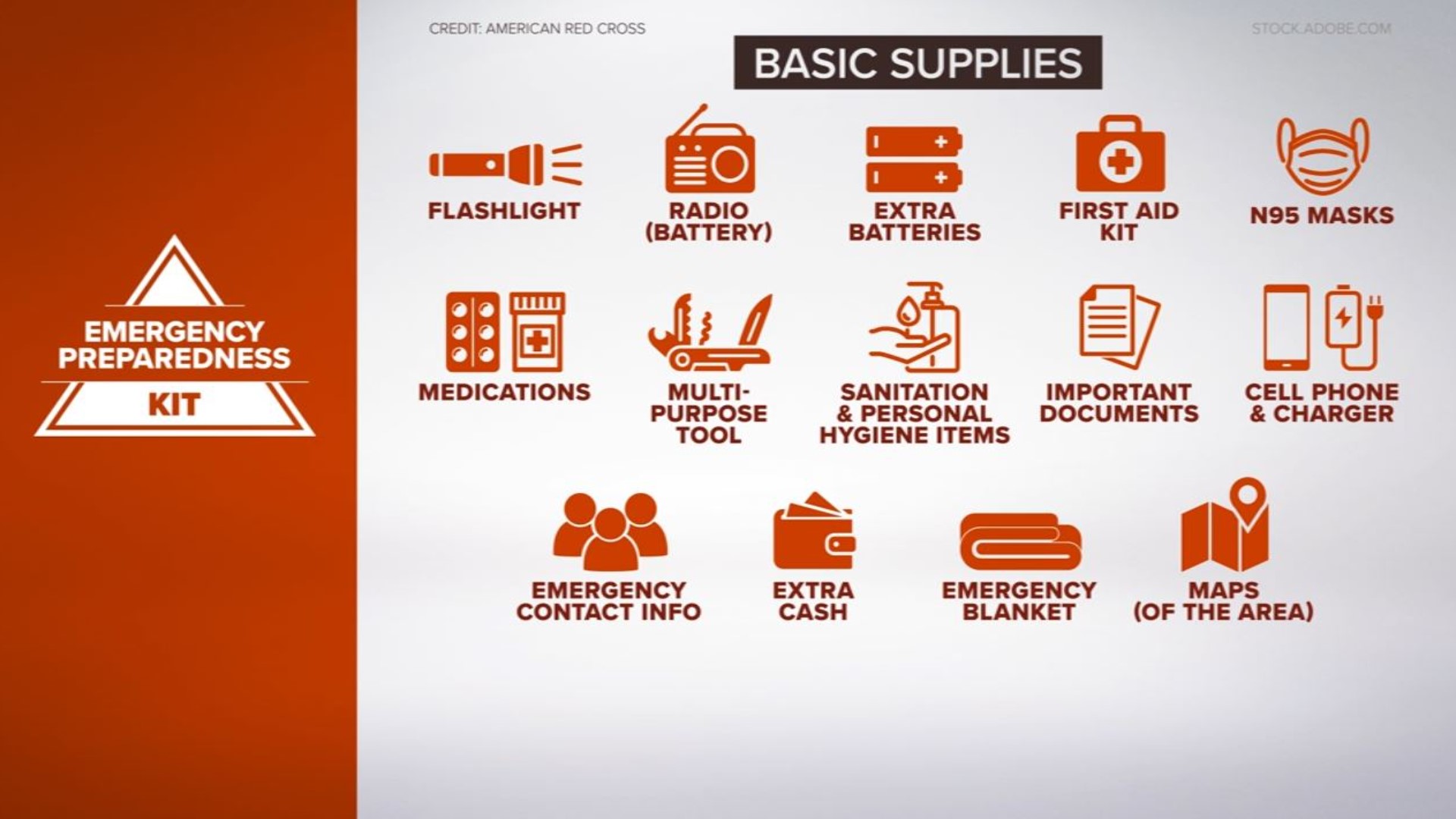YORK, Pa. — As Tropical Depression Ida makes its way through Central Pennsylvania, the state's Department of Transportation is urging residents to ride out the storm at home, if possible, due to potential flash flood conditions and other dangers.
But if you must go out on the roads, here are some safety tips for driving in heavy rain from PA Ready and PennDOT.
Remember:
- Six inches of water will reach the bottom of most passenger cars causing loss of control and possible stalling.
- A foot of water will float many vehicles.
- Two feet of rushing water can carry away most vehicles -- including sport utility vehicles (SUVs) and pick-ups.
- Turn Around, Don't Drown! If you encounter a flooded roadway, do not attempt to drive through the water.
- Shallow, swiftly flowing water can wash a car from a roadway. Also, the roadbed may not be intact under the water.
- Anyone who drives around barriers intended to close a road can face increased penalties if emergency responders are called to rescue motorists who disregard traffic control signs.
- It may be necessary for PennDOT personnel and contractors to enter onto private property to carry out the emergency repairs necessary to protect damaged highways and bridges and to re-open closed roads. Property owners may be contacted by PennDOT requesting authorization to enter their property for this reason. The cooperation of the public is appreciated, as it greatly expedites PennDOT’s flood recovery efforts.
- Motorists can check conditions on more than 40,000 roadway miles by visiting www.511PA.com. 511PA, which is free and available 24 hours a day, provides traffic delay warnings, weather forecasts, traffic speed information and access to more than 860 traffic cameras. 511PA is also available through a smartphone application for iPhone and Android devices.
Here are some other tips for driving through heavy rain from Carfax:
- Slow down: Drive at the speed you feel most comfortable with given the current weather conditions. By reducing your speed, you’ll have more time to react if another car loses control or you encounter a huge puddle.
- Beware of hydroplaning: This is when your vehicle travels or glides on top of the water and has no, or very little, contact with the ground. When this happens, you lose or significantly reduce your traction, so you shouldn’t make any sudden motions. The best thing to do is to keep calm, take your foot off the gas and then steer in the direction you want to go.
- Don’t drive straight through large puddles: Try to drive around it or turn around and try a different route. Just by looking at the puddle, it’s hard to tell how deep it really is. You don’t want to risk driving through it and striking a deep pothole or splashing water up into the car’s electrical system.
- Check your brakes: Whenever you do drive through a large puddle, afterwards, tap the brake pedal lightly to help dry your rotors.
- Allow for extra travel time: You don’t want to be in a rush – you’ll probably need to drive slower and traffic will also likely be moving slower. Plan ahead and check the weather to see if heavy rainfalls are possible.
- Brake earlier and with less pressure: Doing so will add more stopping distance between the driver in front of you and yourself. This will also give the driver behind a heads-up that you’re slowing down. It’s a good rule of thumb to keep more than three seconds of distance between you and the car you’re following in bad weather.
- Turn on your headlights: It allows other motorists to spot you better. Avoid using your high beams because you could blind other drivers and the extra light will bounce off the rain droplets, causing more of a distraction for you. If the rain causes your windshield to fog up, turn on your window defrosters. Check that the air conditioning is switched on so you can clear away the fog as soon as possible.
- Keep your distance from large trucks or buses: The spray from their tires can block your vision and make it extremely difficult to see. You should avoid passing them, but if you absolutely have to, make the pass as quickly as you safely can.
- Pull over if visibility is almost zero: If the rain is coming down so hard that you can’t see anything, find a safe spot to pull over and wait for the downpour to stop. Turn on your hazard lights so other cars can see that you’re on the side of the road.
- Pack an emergency kit: In worst-case scenarios, the last thing you want to be is unprepared. By stocking an emergency kit with essentials, you can be ready for whatever may come your way during a heavy rain storm.

